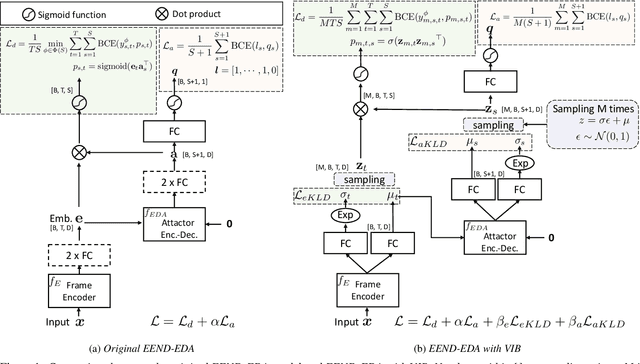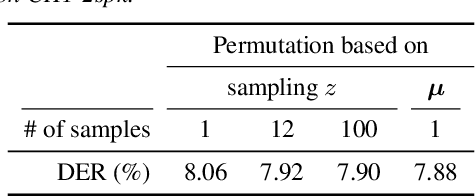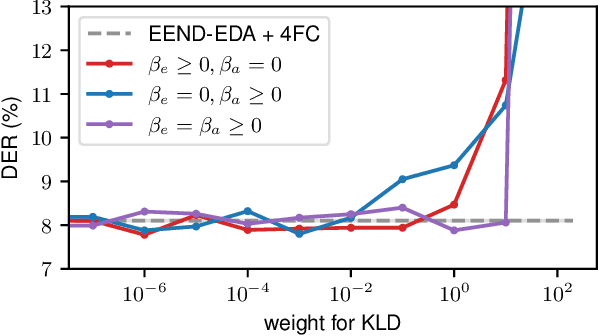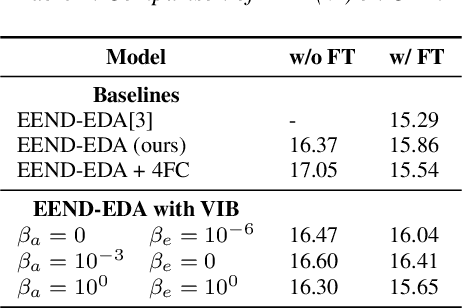Do End-to-End Neural Diarization Attractors Need to Encode Speaker Characteristic Information?
Paper and Code
Feb 29, 2024



In this paper, we apply the variational information bottleneck approach to end-to-end neural diarization with encoder-decoder attractors (EEND-EDA). This allows us to investigate what information is essential for the model. EEND-EDA utilizes vector representations of the speakers in a conversation - attractors. Our analysis shows that, attractors do not necessarily have to contain speaker characteristic information. On the other hand, giving the attractors more freedom allowing them to encode some extra (possibly speaker-specific) information leads to small but consistent diarization performance improvements. Despite architectural differences in EEND systems, the notion of attractors and frame embeddings is common to most of them and not specific to EEND-EDA. We believe that the main conclusions of this work can apply to other variants of EEND. Thus, we hope this paper will be a valuable contribution to guide the community to make more informed decisions when designing new systems.
 Add to Chrome
Add to Chrome Add to Firefox
Add to Firefox Add to Edge
Add to Edge